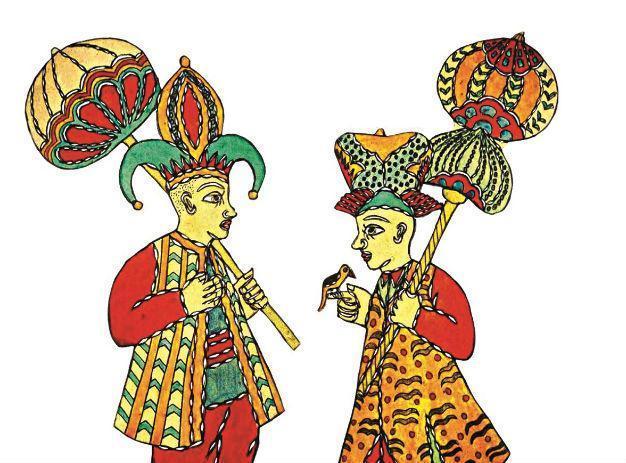Art of Karagöz to live on, says master
ISTANBUL – Anadolu Agency

Those who have sounded the death knell for the Turkish version of shadow puppet theater, Karagöz, have done so prematurely, according to a senior master of the art.
“I have no worries about the future of this art,” said Orhan Kurt, an 86-year-old master of the art. “Young people are interested in it. There is no death to Karagöz. It is important to be liked in this art. For example one day, I played in Yedikule; I set up the stage in an empty field. Even children who were playing football abandoned their game and came to watch me.”
Kurt, who was declared a UNESCO living human treasure in 2008, said he first became acquainted with the theater art in 1936.
“I was living in the Sultanahmet neighborhood in Istanbul. One day I heard the sound of a tambour from a house on the street; I sat down and listened to it. Then the door was opened and a huge man was there. ‘What are you doing here?’ he asked me and invited me in. We played the tambour together. He told me that he was playing Karagöz. Then I understood that he was the great Karagöz master Ragıp Tuğtekin. I served him as an apprentice for 22 years,” he said.
Kurt said he also worked various side jobs besides Karagöz performances. “Because of my wife’s complaints, I began playing Karagöz for a fee. Karagöz is a costly business. Each of them has a cost of 400 Turkish Liras.”
Kurt also said designing a Karagöz puppet was troublesome. “It requires labor, time, attention and talent.”
Worst Karagöz examples on television
Kurt, however, took umbrage with the Karagöz shadow theater plays that are screened on television, particularly during the holy month of Ramadan. “I don’t like current Karagöz plays; they are the worst examples of Karagöz. I don’t play like them. Playing Karagöz requires knowledge of music and literature. You need to know about theater and need to be an artist. You need to know about people and human psychology.”
Instead, the theater is like two people speaking, he said. “It requires great talent to play Karagöz. Sometimes you make the audience sleep and sometimes you make them laugh. It depends on how you play it.”
Before being declared as a UNESCO living human treasure, Kurt was followed by UNESCO Turkey National Committee Professor Öcal Oğuz and İzmir University’s Metin Ekinci for 10 years.
“I played all around the world. UNESCO secretly followed my plays. When I was declared a living human treasure, I learned that they were interested in me. Introducing Karagöz to the world was one of my ideals. I was very happy when I got this title,” he said.
Kurt said he had met many people interested in his art. “One day 15 Chinese people came to my house. They did shootings for hours. I almost kicked them out of the house. People from countries like Denmark, Italy, France, [Serbia] and Greece know and love me, too.”
The master said he last played Karagöz four or five months ago.
“Many years have passed; I have played it for almost 70 years. There were times that I played shows in nine different places in one day. I think that my value is known in Turkey. I am very happy. I always got a return on my art.”
Kurt is running an exhibition titled “Gölgenin Tasarımı” (The Design of Shadow) at the Zeytinburnu Culture and Art Center until May 27.
 Those who have sounded the death knell for the Turkish version of shadow puppet theater, Karagöz, have done so prematurely, according to a senior master of the art.
Those who have sounded the death knell for the Turkish version of shadow puppet theater, Karagöz, have done so prematurely, according to a senior master of the art.